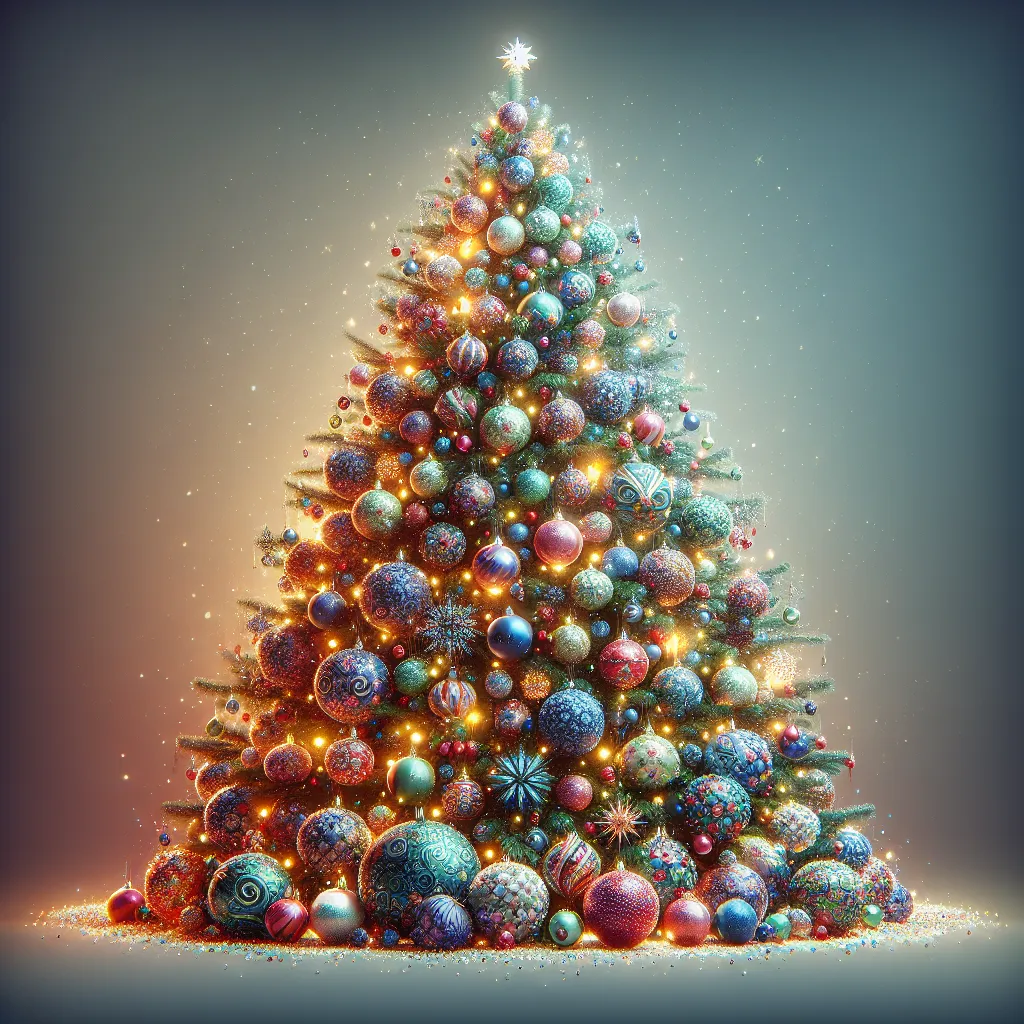The Origins of Christmas Baubles: From Ancient Traditions to Modern Decorations
The history of Christmas baubles dates back to ancient traditions and has evolved into the modern-day decorations that adorn Christmas trees around the world. The origins of Christmas baubles can be traced to various cultures and customs, including the use of fruits, nuts, and other decorative items to celebrate the winter solstice and bring evergreen branches into homes during the Roman festival of Saturnalia.
In the 16th century, the tradition of decorating evergreen trees with ornaments became popular in Germany, where people used apples, nuts, and other handmade decorations. Over time, these ornaments evolved, and by the 19th century, glassblowers in Germany began crafting delicate glass baubles to adorn the trees. These glass ornaments were soon embraced in other parts of Europe and eventually made their way to the United States, where they became an integral part of Christmas decorations.
The symbolism of Christmas baubles has also evolved over the centuries. While early decorations represented the fruits of the earth and the hope of a fruitful harvest, modern baubles come in a variety of shapes, colors, and designs, each carrying its own symbolic meaning. From traditional red and green ornaments symbolizing the colors of Christmas to personalized baubles commemorating special events and milestones, these decorations hold special significance for individuals and families.
Today, Christmas baubles are not only a symbol of the holiday season but also a cherished tradition that brings joy and warmth to homes worldwide. Whether hung on a tree, displayed in wreaths, or used in festive centerpieces, these ornaments continue to capture the spirit of the season and connect people to the rich history and traditions of Christmas.
This aspect of the history and symbolism of Christmas baubles showcases the evolution of this beloved tradition, from its ancient roots to the diverse and meaningful decorations that brighten the holiday season.
The Evolution of Christmas Baubles: How They Became an Iconic Holiday Decoration
The history of Christmas baubles is a fascinating journey that reflects the evolution of holiday traditions. These iconic decorations have deep roots in European history, dating back to the 16th century. Originating in Germany, where they were initially made of glass, baubles were a luxury item affordable only to the wealthy.
As time passed, the popularity of Christmas baubles spread across Europe, and their production methods evolved. By the 19th century, they were being produced on a larger scale, making them accessible to a wider audience. The Industrial Revolution further transformed the Christmas bauble industry, leading to mass production and the use of new materials such as plastic and metal.
The symbolism of Christmas baubles also evolved over time. Originally, they were associated with the paradise tree, a medieval German tradition representing the Tree of Knowledge in the Garden of Eden. The decorative baubles adorned the paradise tree, symbolizing the fruits of redemption. As the tradition of the Christmas tree spread, so did the use of baubles as a symbol of festive celebration and joy.
Today, Christmas baubles come in a wide variety of shapes, colors, and materials, reflecting diverse cultural influences and individual preferences. They have become an integral part of holiday decor, adorning trees in homes around the world. The evolution of Christmas baubles from luxury items to ubiquitous symbols of the holiday season is a testament to their enduring appeal and significance.
This brief historical overview sheds light on how Christmas baubles have transformed from exclusive ornaments to a universally cherished emblem of the holiday season. As we continue to embrace these timeless decorations, we honor the rich traditions and cultural heritage that have shaped the festive celebrations we enjoy today.
Symbolism of Christmas Baubles: The Meaning Behind the Ornaments
When it comes to the symbolism of Christmas baubles, these ornaments hold a deep significance in the celebration of the holiday season. Originating in 16th century Germany, the tradition of decorating trees with ornaments, including baubles, has evolved over the centuries to symbolize various aspects of the Christmas story and the winter season.
The round shape of the Christmas bauble is often associated with the globe, symbolizing the world and universal peace. Additionally, the use of evergreen trees and their branches, as well as the baubles adorning them, symbolize eternal life and the hope of the coming spring.
Furthermore, the tradition of hanging baubles on Christmas trees is linked to the concept of giving and generosity. In the Victorian era, it was customary to decorate trees with edible treats and small gifts, and this tradition evolved to include colorful and reflective baubles. These ornaments thus represent the spirit of giving and the joy of sharing with loved ones.
In religious symbolism, Christmas baubles can also represent the fruits of the Garden of Eden, reflecting themes of temptation, redemption, and the promise of salvation through the birth of Jesus Christ.
Overall, the symbolism of Christmas baubles encompasses themes of peace, hope, generosity, and religious significance, making them a meaningful and integral part of the holiday season.
Christmas Baubles Across Cultures: A Global Perspective on Decorating for the Holidays
Christmas baubles, also known as ornaments, have played a significant role in holiday decorations across various cultures around the world. The tradition of decorating Christmas trees with baubles dates back to the 16th century in Germany, where they were initially made of glass and shaped like fruits, nuts, or other symbols. Over time, this tradition spread to other parts of Europe, and eventually to different continents, each region adding its unique cultural influences to the ornamentation.
In Europe, Christmas baubles are often associated with the festive traditions of the region. In Italy, for example, the baubles are intricately crafted and often reflect the nativity scene, incorporating religious symbolism into the decorations. In Eastern European countries like Poland and Ukraine, handmade baubles using traditional folk art motifs are popular, adding a touch of heritage and craftsmanship to the holiday celebrations.
Moving to Asia, countries like Japan have embraced the tradition of decorating Christmas trees with baubles, but with a distinctive cultural twist. Japanese baubles often feature delicate origami or elaborate designs inspired by nature, showcasing the country’s unique aesthetic sensibilities.
Across the Americas, Christmas baubles have been integrated into diverse cultural celebrations. In Mexico, vibrant handcrafted baubles in bright colors and intricate patterns are used to adorn Christmas trees during the festive season, reflecting the country’s rich artistic heritage. In the United States, the tradition of decorating trees with baubles has been influenced by various immigrant communities, leading to a diverse array of ornament styles and designs.
Overall, the global perspective on Christmas baubles demonstrates how these ornaments have evolved to incorporate a wide range of cultural symbols and artistic expressions, enriching the holiday season with diversity and creativity.

